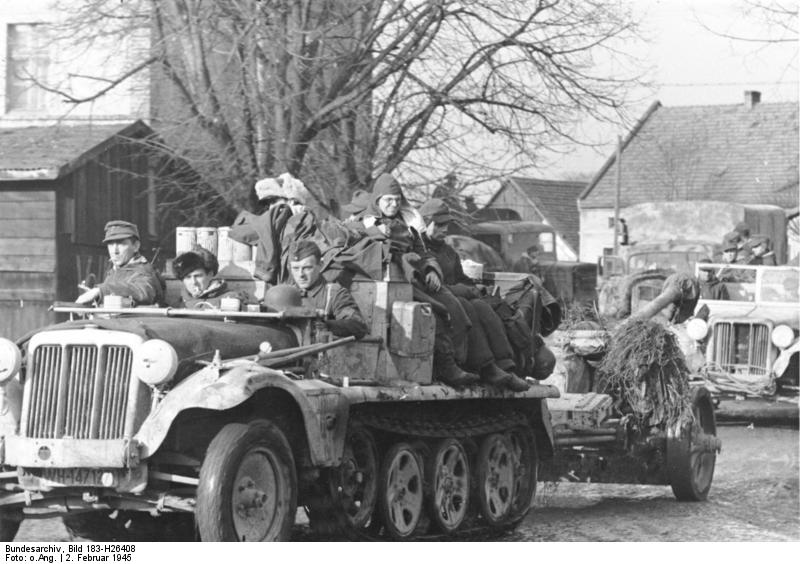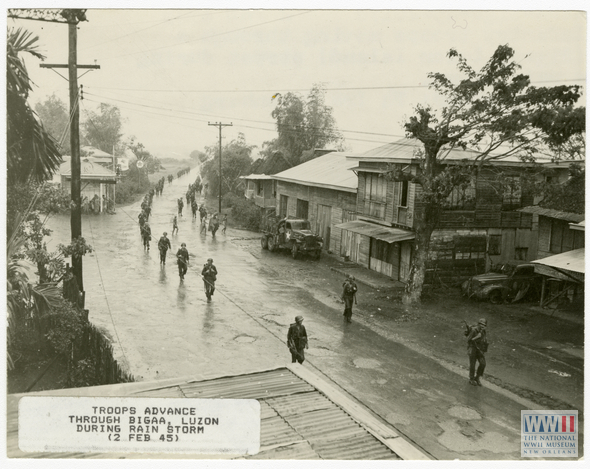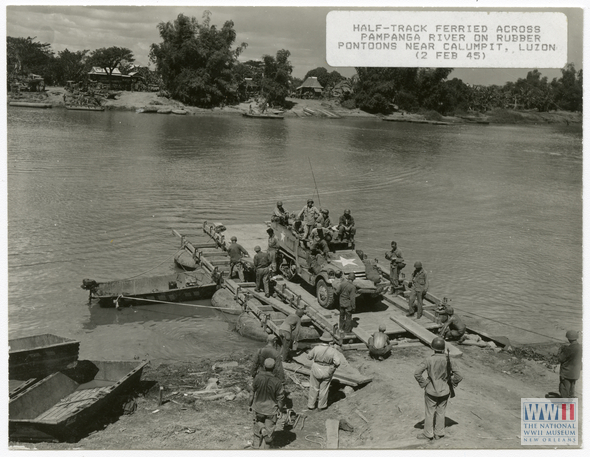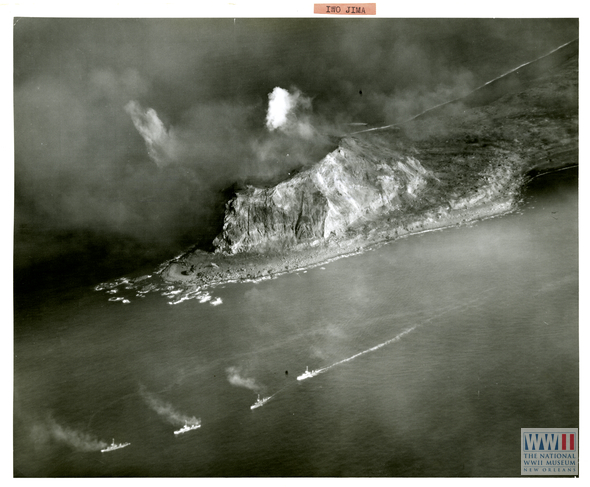Air Operations, CBI
BURMA- 11 10th Air Force B-25s attack troops and supplies at Loilem.
- More than 60 10th Air Force fighter-bombers support Allied ground forces in the Hosi, Mabein, and Molo areas.
- Fighter-bombers complete numerous sorties against troops, occupied towns, motor vehicles, and supplies at 10 locations.
- 4 14th Air Force P-40s attack a Japanese Army regimental headquarters at Lungchow.
Air Operations, Europe
RAF BOMBER COMMANDDaylight Ops:
Minor Ops:
- There are 2 Mosquito patrols over northern Germany without a loss.
- 495 Lancasters and 12 Mosquitos of Nos. 1, 3, 6 and 8 Groups are sent to Wiesbaden. This is Bomber Command's one and only large raid on Wiesbaden. There is complete cloud cover, but most of the bombing hits the town. 5 important war industries along the banks of the Rhine are untouched, but the railway station is damaged.
- 3 Lancasters crash in France.
- 323 aircraft including 277 Halifaxes, 27 Lancasters and 19 Mosquitos of Nos. 4, 6 and 8 Groups are sent to Wanne-Eickel. This target is also cloud-covered and the attack, intended for the oil refinery, is not accurate. Local people assume that the target is a local coal mine - Shamrock 3/4. Most of the bombing falls in the open ground around the mine.
- 4 Halifaxes are lost.
- 250 Lancasters and 11 Mosquitos of No. 5 Group are sent to bomb Karlsruhe. Cloud cover over the target causes this raid to be a complete failure. Karlsruhe reports no casualties and only a few bombs. The report mentions 'dive bombers', presumably the Mosquito marker aircraft trying to establish their position. This is a lucky escape for Karlsruhe in its last major RAF raid of the war.
- 14 Lancasters are lost. No. 189 Squadron, from Fulbeck, loses 4 of its 19 aircraft on the raid.
- 43 Mosquitos are sent to Magdeburg and 20 to Mannheim, and there are 44 Moaquito patrols and 54 RCM sorties.
- There are no losses.
GERMANY:
- During the 8th Air Force's only offensive mission of the day, a P-47 pilot of the 63rd Fighter Squadron, 56th Fighter Group, downs 1 FW-190 and 1 Bf-109 near Berlin at 1040 hours.
GERMANY:
- More than 350 9th Air Division bombers attack road and rail bridges east of the Rhine River and defended areas in the battle zones of western Germany.
ITALY:
- 12th Air Force B-25s attack bridges at seven locations.
Air Operations, Far East
A large force of US B-29s demolishes Singapore harbor and Japanese naval shipping moored there.
[Air Operations, Formosa
- V Bomber Command B-24s attack the Okayama airfield at dawn.
- During the night, 63rd Heavy Bomb Squadron SB-24s attack several airfields.
Air Operations, Marianas
A VMF(N)-534 F6F downs a C6N 'Myrt' reconnaissance 120 miles northeast of Saipan at 1030 hours.
[Air Operations, Philippines
- FEAF B-24s attack Corregidor.
- XIII Bomber Command B-24s attack the Cavite naval base.
- 22 22nd Heavy Bomb Group B-24s based on Angaur attack Corregidor.
- V Bomber Command B-25s attack pillboxes, artillery positions, and river barges in the Cagayan River valley.
- A-20s attack Baler Bay.
- V Fighter Command fighter-bombers support US 6th Army ground forces advancing toward Manila.
- SBDs from VMSB-133, VMSB-142, and VMSB-241 support the US 1st Cavalry Divisionís dash to Manila with attacks on ground targets directly ahead of the ground vanguard units. In one encounter, at Santa Maria, when a cavalry squadron is stopped by an Japanese Army battalion, SBDs making low-level dummy passes (due to the proximity of friendly troops) force the Japanese to withdraw. By dayís end, the cavalry column has advanced to within 15 miles of its objective, thanks in large measure to USMC air support and V Bomber Command B-25s.
Air Operations, Volcano Islands
- 20 VII Bomber Command B-24s attack Iwo Jima.
- During the night, 10 VII Bomber Command B-24s conduct snooper raids against Iwo Jima.
Allied Planning
A series of intelligence reports is completed for the JCS entitled "Estimate of Soviet Post-war Capabilities and Intentions". The assessments conclude that the USSR will seek to control eastern Europe and influence central Europe, China, and Japan. Soviet foreign policy will be characterized by fear and suspicion of American motives. The USSR will avoid conflict with the United States and Great Britain until at least 1952, but the Soviets will go to war earlier if they perceive their vital interests are at stake.
The CCS approves SHAEF's January 18 plan for offensive operations into Germany. The CCS in its response emphasizes that the main effort remains in the north and that phase two of the campaign (crossing the Rhine River) can occur at any time during phase one (eliminating all German forces west of the Rhine).
[Burma
The Japanese force the British 36th Div back over the Shweli River and launch heavy attacks on the US 5332nd Bde, which nevertheless manages to capture some heights in the Hpa-pen area.
[CBI
BURMAThe 2nd Squadron, 124th Cavalry attacks Japanese positions near Hpa-pen, where Japanese troops have entrenched themselves to protect the retreat route of their army. The Americans capture the position, losing 22 killed and 88 wounded.
[Diplomatic Relations
Roosevelt and Churchill meet on Malta, the first part of the Argonaut Conference, before proceeding to Yalta in the Crimea for conferences with Stalin. It was Churchill's last- and again- unsuccessful attempt to win American support for a push into the Balkans.
[Eastern Front
GERMANYThe Soviet 8th Guards Army is crossing the Oder River as the 1st Guards Tank Army assaults Küstrin. The German 9th Army is engaging both formations.
CENTRAL SECTORThe 8th Guards Army begins to attack across the frozen Oder while the 1st Guards Tank Army attacks in Kustrin. Both units meet furious resistance from the 9th Army. Despite repeated attacks the 1st Guards Tank is unable to take Kustrin but is is mistakenly reported to the Stavka that the town had fallen.
SOUTHERN SECTORThe 26th Army anf 4th Guards Army link up at Adony, rejoining the Soviet defenses in Hungary.
[Indochina
Gen Albert C. Wedemeyer sends a report to Washington on the growing deterioration in the relations between the Japanese occupying forces, about 100,000 men, and the French adminstration, headed by the Governor-General, Adm Jean Decoux. The US 14th Air Force gives some help to the local resistance movement.
[Pacific
The Japanese coast defense vessel No. 144 is sunk by the US submarine Besugo (SS-321) off the Malay Peninsula.
[Philippines
On Luzon the XIV Corps pushes on toward Manila after making contact with the I Corps north of Cabanatuan. The I Corps is now in a position to protect the east flank of the XIV from any possible Japanese counterattacks. In the XI Corps sector, the American advance is held up by the Japanese in front of the Zigzag Pass; further north, the 149th infantry advance toward Dinalupihan without meeting resistance.
In the 8th Army sector, the 11th Airborne Div advances slowly to the foothills of the Tagaytay Mountains.
All combat operations have ended on Leyte. The Americans withdraw the 77th Div from the island to take part in the landing on Okinawa.
[Western Front
In the US 1st Army sector, advance guards of the 9th and 2nd Divisions, V Corps, emerge from Monschau Forest.
In the XVIII Airborne Corps sector, the 1st Inf and 82nd Airborne Divs open a large-scale offensive against the Siegfried Line. The 1st Div emerges from the Buchholz Forest near Ramscheid, while the 82nd passes throught the line and takes Udenbreth and Neuhof.
The 36th Div, VI Corps, US 7th Army, continues its offensive in the direction of Oberhoffen.
On the southern flank of the front the French 5th Arm Div enters Colmar and begins mopping up. In the XXI Corps sector, units of the 3rd Div, with armored support, advance through Artzenheim along the road between the Rhine-Rhone Canal and the Rhine River in the direction fo Biesheim, northeast of Neuf-Brisach. The 75th Div is also making for Neuf-Brisach.
1st Army units are attacking near Remscheid. British forces mount attacks over the Maas, north of Breda and near Nijmegen to put pressure on the Germans.
[Images from February 2, 1945
|
|
|
|
|
|
A German Stug 4 |
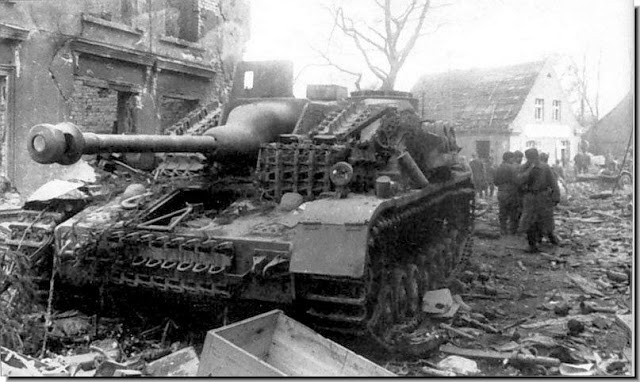 |
